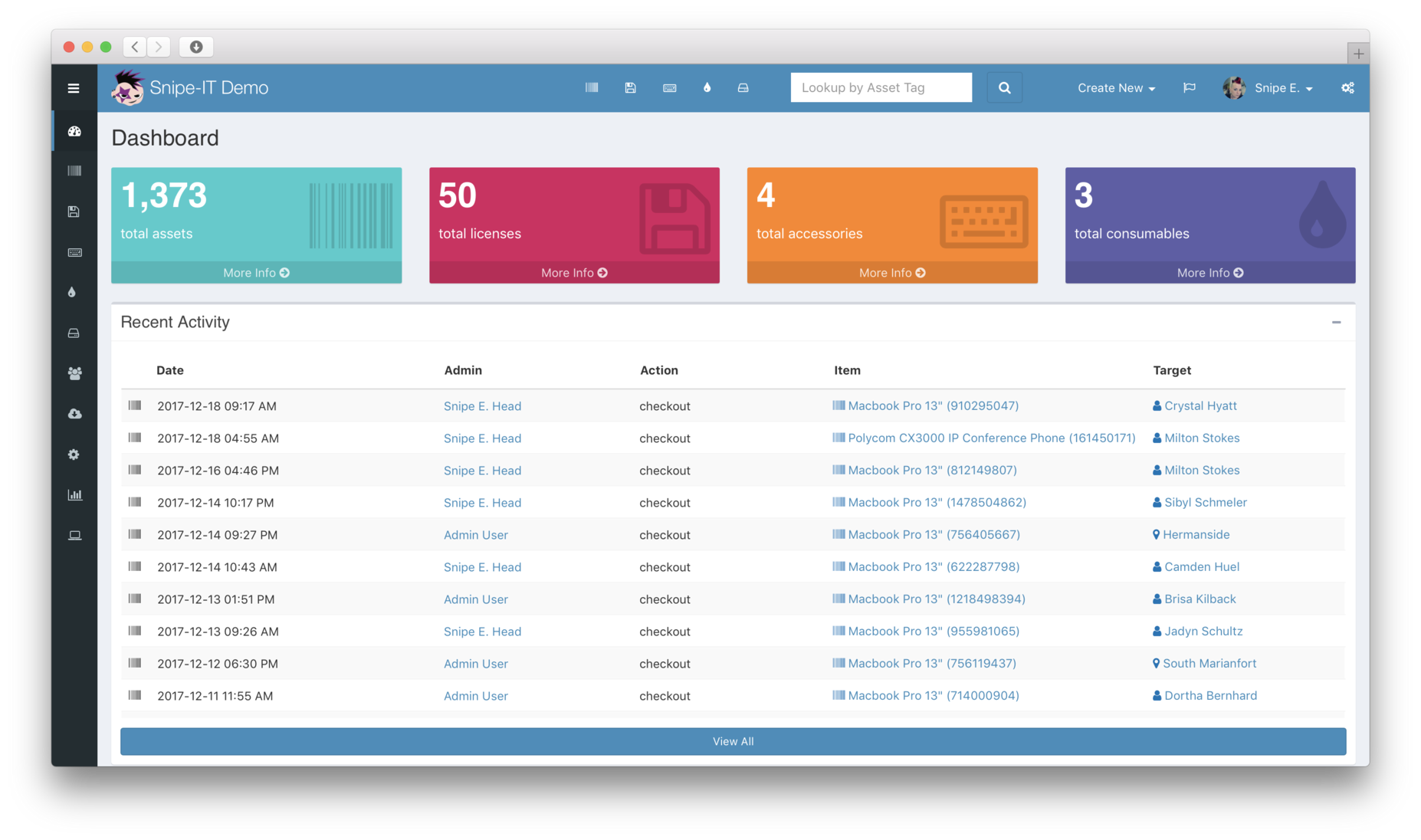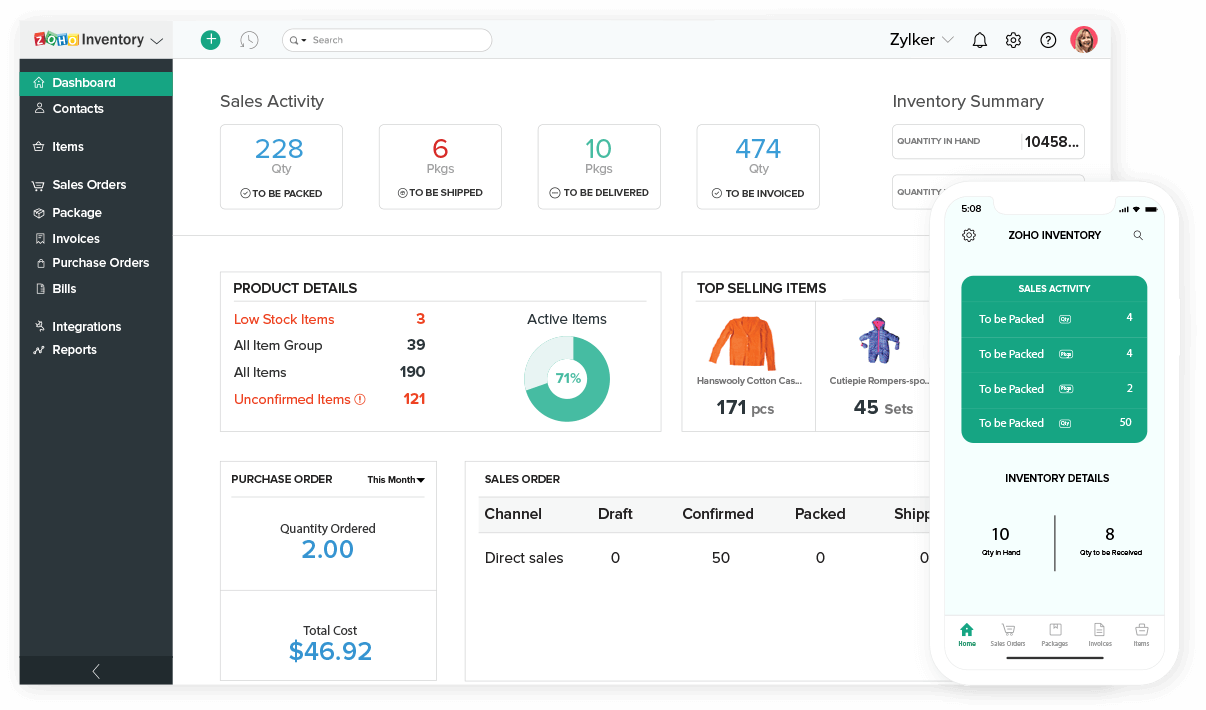Inventory small business software is transforming the way small businesses manage their inventory, empowering them with tools to streamline operations, reduce costs, and grow their businesses. By providing real-time visibility into stock levels, automating order processing, and generating insightful reports, these software solutions are essential for businesses looking to optimize their inventory management.
With its intuitive interfaces, customizable features, and seamless integrations with other business systems, inventory small business software is designed to meet the unique needs of small businesses. Whether you’re a retail store, e-commerce business, or manufacturer, there’s an inventory software solution tailored to help you succeed.
Inventory Management Features
Inventory management software for small businesses is designed to streamline the process of tracking stock levels, managing orders, and generating reports. These features can help businesses save time and money, while also improving customer service.
Core features of inventory management software include:
- Tracking stock levels:This feature allows businesses to track the quantity of each item in stock, as well as the location of each item. This information can help businesses avoid overstocking or understocking, and can also help them identify slow-moving items.
- Managing orders:This feature allows businesses to track the status of each order, from the time it is placed to the time it is shipped. This information can help businesses identify any bottlenecks in the order fulfillment process, and can also help them improve customer service.
- Generating reports:This feature allows businesses to generate a variety of reports, such as inventory reports, sales reports, and profit reports. These reports can help businesses track their progress and identify areas for improvement.
Benefits of Using Inventory Management Software
There are many benefits to using inventory management software, including:
- Improved accuracy:Inventory management software can help businesses improve the accuracy of their inventory records. This can lead to reduced losses due to overstocking or understocking.
- Increased efficiency:Inventory management software can help businesses increase the efficiency of their inventory management processes. This can lead to reduced labor costs and improved customer service.
- Improved decision-making:Inventory management software can provide businesses with the information they need to make better decisions about their inventory. This can lead to increased profits and improved customer satisfaction.
Benefits of Using Inventory Software

Inventory software offers numerous advantages to businesses, streamlining inventory management processes and enhancing overall efficiency. By utilizing such software, businesses can experience improved accuracy, increased efficiency, and reduced costs, ultimately contributing to increased profitability and improved customer satisfaction.
Improved Accuracy
Manual inventory management methods are prone to human error, leading to inaccurate inventory counts and potential stock discrepancies. Inventory software eliminates these errors by automating inventory tracking and providing real-time visibility into stock levels. This accuracy ensures that businesses have the right products in the right quantities, reducing the risk of overstocking or understocking.
Increased Efficiency
Inventory software automates many inventory management tasks, such as stock replenishment, order fulfillment, and inventory tracking. This automation frees up valuable time for employees, allowing them to focus on other critical business activities. The streamlined processes also reduce the time and effort required to manage inventory, improving overall efficiency.
Reduced Costs
Inventory software can help businesses reduce costs in several ways. By improving inventory accuracy, businesses can minimize losses due to overstocking or understocking. The automated processes also reduce labor costs associated with manual inventory management. Additionally, inventory software can provide insights into inventory trends and patterns, enabling businesses to optimize their inventory levels and reduce storage costs.
Types of Inventory Software

Inventory software solutions vary based on their deployment and accessibility options, with each type offering unique advantages and considerations.
Cloud-based Inventory Software
Cloud-based inventory software is hosted on remote servers, allowing users to access their inventory data from anywhere with an internet connection. This eliminates the need for on-premises hardware and IT infrastructure, reducing setup and maintenance costs.
On-premises Inventory Software
On-premises inventory software is installed on the company’s own servers, providing greater control over data security and customization. However, it requires significant upfront investment in hardware, software, and IT support.
Open-source Inventory Software, Inventory small business software
Open-source inventory software is freely available and customizable, offering cost-effective solutions for small businesses. However, it requires technical expertise for installation, maintenance, and updates.
Choosing the Right Software
When selecting inventory software for a small business, consider the following factors:
Business size and industry:Smaller businesses may require simpler software with fewer features, while larger businesses or those in specialized industries may need more advanced capabilities.
Budget
Inventory software can range from free to thousands of dollars. Determine a budget before exploring options to narrow down the selection.
Features
Consider the specific features you need, such as inventory tracking, order management, and reporting capabilities. Make a list of essential and desirable features to guide your search.
Integration
If your business uses other software, such as accounting or e-commerce platforms, ensure the inventory software can integrate seamlessly.
Support
Choose software with reliable customer support to assist with implementation, training, and ongoing issues.
Reviews and testimonials
Read reviews and testimonials from other businesses to gain insights into the software’s performance and user experience.
5. Implementation and Best Practices

Implementing inventory software can streamline your business operations, but it’s crucial to follow best practices for optimal results.
To ensure a successful implementation, follow these steps:
Planning and Preparation
- Define your inventory management goals and objectives.
- Identify the specific features and capabilities you need.
- Research and select the software that best meets your requirements.
- Establish a budget and timeline for implementation.
Data Collection and Input
- Gather accurate and complete inventory data, including item descriptions, quantities, and locations.
- Use barcode scanners or RFID tags to automate data entry and minimize errors.
- Train staff on proper data entry procedures.
Software Customization and Configuration
- Configure the software to match your business processes and workflows.
- Customize reports and dashboards to provide relevant insights.
- Set up alerts and notifications to stay informed about critical inventory levels.
Training and Adoption
- Provide comprehensive training to all staff who will use the software.
- Encourage user feedback and suggestions to improve adoption.
- Monitor usage and make adjustments as needed.
Continuous Improvement
- Regularly review your inventory management processes and identify areas for improvement.
- Update the software as new features and functionality become available.
- Seek professional support or consult with the software vendor for guidance and troubleshooting.
Integration with Other Systems

Integrating inventory software with other business systems can enhance efficiency and streamline operations. By connecting inventory data with accounting software, businesses can automatically update inventory levels, reducing the risk of errors and discrepancies. Integration with e-commerce platforms allows for real-time inventory updates, ensuring accurate product availability information for customers.
Benefits of Integration
- Automated inventory updates reduce errors and discrepancies.
- Real-time inventory visibility improves customer satisfaction.
- Streamlined operations enhance efficiency and save time.
Integration Considerations
When integrating inventory software with other systems, it’s crucial to consider the following:
- Data compatibility: Ensure that the systems can exchange data seamlessly.
- Security measures: Implement appropriate security measures to protect sensitive data.
- Customization needs: Determine any necessary customizations to tailor the integration to specific business requirements.
Trends and Future of Inventory Software

The future of inventory software for small businesses is promising, with advancements in technology driving innovation and efficiency. As technology continues to evolve, inventory software is expected to become even more sophisticated and user-friendly.
One emerging trend is the integration of artificial intelligence (AI) and machine learning (ML) into inventory software. This technology can automate tasks such as demand forecasting, inventory optimization, and supplier management, allowing small businesses to streamline their operations and make better decisions.
Real-time Inventory Tracking
Real-time inventory tracking is becoming increasingly important for small businesses. This technology allows businesses to track inventory levels in real-time, providing them with up-to-date information on the availability of their products. This can help businesses avoid stockouts, improve customer satisfaction, and reduce waste.
Mobile Accessibility
Mobile accessibility is another important trend in inventory software. With the increasing use of smartphones and tablets, businesses need inventory software that can be accessed from anywhere. This allows businesses to manage their inventory on the go, making it easier to track stock levels, place orders, and respond to customer inquiries.
Integration with Other Systems
Inventory software is increasingly being integrated with other business systems, such as accounting software, e-commerce platforms, and customer relationship management (CRM) systems. This integration allows businesses to streamline their operations and improve data accuracy.
Cloud-based Software
Cloud-based inventory software is becoming increasingly popular among small businesses. This software is hosted on a remote server, which allows businesses to access it from anywhere with an internet connection. Cloud-based inventory software is typically more affordable than on-premise software, and it can be easier to maintain and update.
Last Point: Inventory Small Business Software
As the business landscape continues to evolve, inventory small business software will continue to play a vital role in helping small businesses thrive. With its ability to automate tasks, improve accuracy, and provide valuable insights, inventory software is an indispensable tool for businesses looking to optimize their operations and achieve success.
Essential FAQs
What are the benefits of using inventory small business software?
Inventory small business software offers numerous benefits, including improved accuracy, increased efficiency, reduced costs, enhanced customer satisfaction, and better decision-making.
What types of inventory software are available?
There are several types of inventory software available, including cloud-based, on-premises, and open-source solutions. Each type has its own advantages and disadvantages, so it’s important to choose the one that best fits your business needs.
How do I choose the right inventory software for my small business?
When choosing inventory software, consider factors such as your business size, industry, budget, and specific inventory management needs. It’s also important to look for software that is easy to use, integrates with your other business systems, and provides the features and functionality you require.